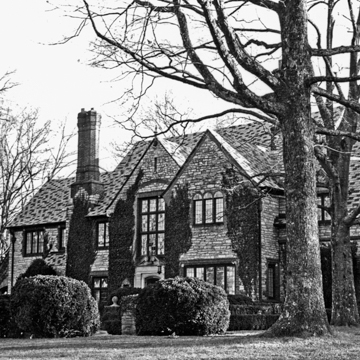Stoneleigh is the region's most impressive Tudor Revival building. The house was constructed for furniture manufacturer Thomas B. Stanley and his wife, Anne Pocahontas Bassett, a member of the competing Bassett family of furniture manufacturers. The couple hired McBroom of Des Moines, Iowa, to design their house after Stanley visited a Des Moines wood broker's house by McBroom. Stanley probably knew landscape architect Draper of Charlotte, North Carolina, through Draper's work as the South's leading designer of mill towns and affluent suburbs. Draper's work at Stoneleigh may have led to his Forest Park and Druid Hills (HR21) commission in Martinsville. In 1961, the gardens were restored and redesigned by Gillette. The house became a Democratic stronghold when Stanley's career took a political turn. He served in the Virginia legislature, then Congress, and, finally, won the governorship of Virginia. As governor from 1954 to 1958, he became embroiled in the upheaval that followed the Supreme Court decision of 1954 on school desegregation. Stanley initially stated that he would comply with the ruling, but, as part of Senator Harry Byrd's political machine, he soon capitulated and supported Byrd's Massive Resistance plan.
The house has a broad central block with flanking wings of different heights, two cross gables on the main block, and clustered chimneys with chimney pots rising high above the multicolored slate roof. Brick edging highlights openings, and banks of tall, narrow leaded windows and a carved Renaissance stone entrance enrich the massive stone construction. With its fifty-two acres and fine gardens Stoneleigh is one of the commonwealth's showplaces.


